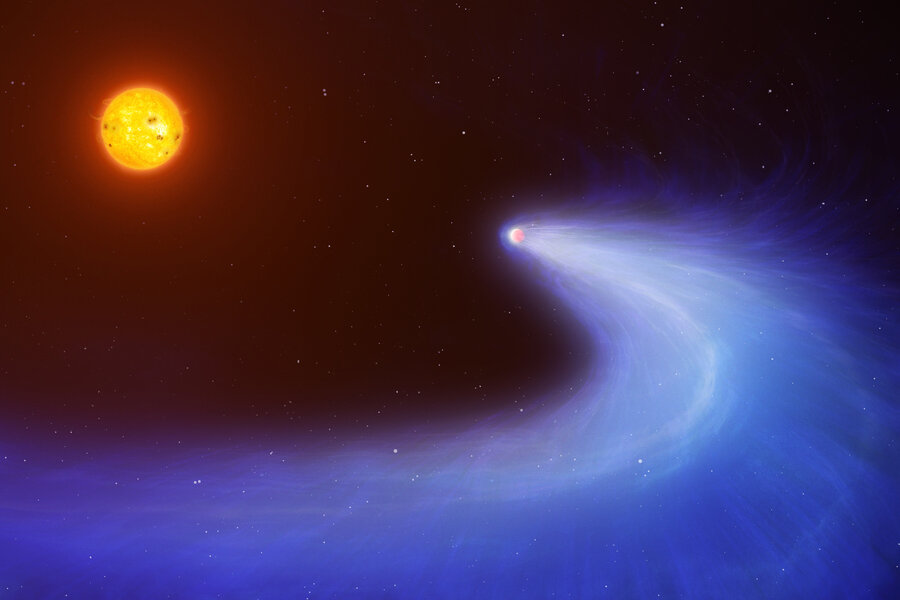Red dwarf star cooks exoplanet, leaving a ‘comet-like tail’
Loading...
Here on Earth, we have an amicable relationship with our sun. But for other planets, in other reaches of the universe, things can get a little more heated.
According to a study published Wednesday in the journal Nature, a red dwarf star is burning off the atmosphere of a nearby exoplanet. X-ray observations, conducted by David Ehrenreich of the Observatoire de l'Université de Genève, show the exoplanet GJ 436b being bombarded by extreme radiation from its parent star. In its wake, a giant cloud of hydrogen gas resembles a familiar cosmic marvel.
“The cloud forms a comet-like tail as a result of ultraviolet light coming from the star pushing on the hydrogen and causing it to spiral outwards,” co-author Peter Wheatley said in a press release.
GJ 436b is a warm planet, similar in mass to Neptune. In 2004, it was discovered orbiting the red dwarf star Gliese 436. Red dwarfs are very small and cool in relation to other stars – due to their low mass and slow burn, they are believed to live for up to 10 trillion years.
Researchers have already suggested that low-mass, close-orbiting exoplanets might lose a fraction of their atmospheres to parent stars. But until now, they have not been able to demonstrate those losses empirically.
According to Dr. Wheatley, who belongs to the University of Warwick's Astronomy and Astrophysics Group, the star is burning quite a lot of hydrogen from GJ 436b’s atmosphere – about 1000 metric tons per second. But the exoplanet is large, so it will take roughly one billion years to lose even 0.1% of its total mass.
“The same process is likely to be much stronger on other exoplanets, where the entire atmosphere could be removed or evaporated to destruction,” Wheatley said.
And in the search for life-harboring exoplanets, understanding planet-star relationships is crucial. So while other exoplanets might not be as lucky as GJ 436b, astronomers can more effectively hunt for those that are.








